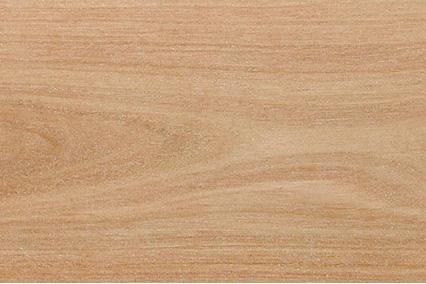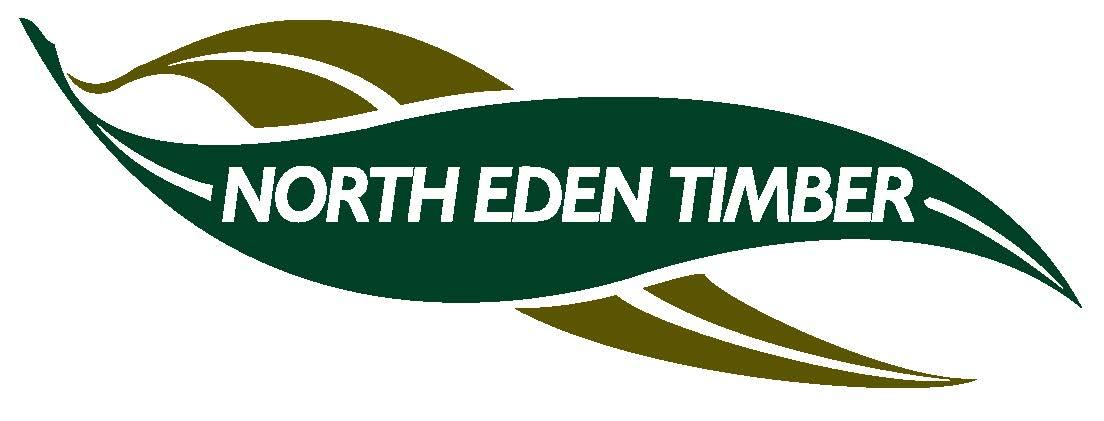Narrow-leaved Peppermint is an Australian hardwood used for construction and fencing.
Eucalyptus radiata, Eucalyptus robertsonii
Eucalyptus australiana
Narrow-leaved peppermint is a member of a family of eucalypts used in the production of oils. It grows in the mountainous areas of New South Wales and Victoria, and in Tasmania. Although many members of the peppermint family are not suitable for use in construction, the narrow-leaved peppermint has been used for construction, fencing, joinery, outbuildings, handles, sporting goods, and novelties.
The heartwood is pale to light brown, and the sapwood slightly lighter but not readily discernible. The grain is straight or interlocked, and the texture is even and of medium fineness. Although gun veins are common in the narrow-leaved peppermint, they are rather less so in this timber than in other members of the peppermint species, though if present they can cause problems in working the timber.
The heartwood of narrow-leaved peppermint is moderately durable, and the sapwood is susceptible to lyctid borer, though not to termites. Narrow-leaved peppermint works fairly easily with a reduced cutter angle. Pre-boring is necessary. The timber glues well and comes to a reasonable finish, though gum veins are common and can cause problems.
Shrinkage
| Very Low | Low | Medium | High | Very High | |
|---|---|---|---|---|---|
|
|
|
|
|||
|
Tangential :
|
13.20% | ||||
|
Radial :
|
6.30% | ||||
|
Unit Movement Tangential:
|
0.36% | ||||
|
Unit Movement Radial:
|
0.23% |
Strength Group
| Very High | High | Reasonably High | Medium High | Medium | Reasonably Low | Low | Very Low | |
|---|---|---|---|---|---|---|---|---|
| Unseasoned: | S1 | S2 | S3 | S4 | S5 | S6 | S7 | S8 |
|
|
||||||||
| Seasoned: | SD1 | SD2 | SD3 | SD4 | SD5 | SD6 | SD7 | SD8 |
|
|
Stress Grade
|
Structural No. 1 |
Structural No. 2 |
Structural No. 3 |
Structural No. 4 |
Structural No. 5 |
|
|---|---|---|---|---|---|
| Unseasoned: | F14 | F11 | F8 | F7 | F5 |
| Seasoned: | F22 | F17 | F14 | F11 | F8 |
Density per Standard
| Seasoned: | 820kg/m3 |
|---|---|
| Unseasoned: | 1155kg/m3 |
Joint Group
| Very High | High | Reasonably High | Medium | Low | Very Low | |
|---|---|---|---|---|---|---|
| Unseasoned: | J1 | J2 | J3 | J4 | J5 | J6 |
|
|
||||||
| Seasoned: | JD1 | JD2 | JD3 | JD4 | JD5 | JD6 |
|
|
Colour
| White, yellow, pale straw to light brown | Pink to pink brown | Light to dark red | Brown, chocolate, mottled or streaky | |
|---|---|---|---|---|
|
|
||||
Mechanical Properties
|
Modulus of Rupture - Unseasoned:
|
68 |
|---|---|
|
Modulus of Rupture - Seasoned:
|
117 |
|
Modulus of Elasticity - Unseasoned:
|
11 |
|
Modulus of Elasticity - Seasoned:
|
14 |
|
Maximum Crushing Strength - Unseasoned:
|
35 |
|
Maximum Crushing Strength - Seasoned:
|
62 |
|
Impact - Unseasoned:
|
12 |
|
Impact - Seasoned:
|
12 |
|
Toughness - Unseasoned:
|
Medium - 15 - 24 Nm |
|
Toughness - Seasoned:
|
Low - up to 15 Nm |
|
Hardness - Unseasoned:
|
5.2 |
|
Hardness - Seasoned:
|
7.1 |
Durability
| Low | Moderate | Reasonably High | High | |
|---|---|---|---|---|
| (0 - 5 yrs) | (5 - 15 yrs) | (15 - 25 yrs) | (more than 25 yrs) | |
|
In-Ground:
|
|
|||
| (0 - 7 yrs) | (7 - 15 yrs) | (15 - 40 yrs) | (More than 40 yrs) | |
|
Above ground:
|
|
|||
| (0 - 20 yrs, usually < 5) | (21 - 40 yrs) | (41 - 64 yrs) | (More than 60 yrs) | |
|
Marine Borer Resistance:
|
|
|
Lyctid Borer Susceptibility:
|
Susceptible |
|---|---|
| Lyctid Borer Susceptibility - Other: | |
|
Termite Resistance:
|
Not Resistant |
Fire Properties
| 1 - non-combustible | 2 - reasonably non-combustible | 3 - slightly combustible | 4 - combustible | |
|
Fire Properties Group Number: |
|
| Group Number - Other: | 3 if used on MDF or particleboard ≥12mm; veneer thickness 0.6-0.85mm |
|---|---|
|
Average Specific Extinction Area:
|
<250 |
|
Bushfire Resistance:
|
BAL 12.5 and 19 - All AS 3959 Required Applications |
The texture is even and of medium fineness, and the grain is straight or interlocked. The heartwood is pale to light brown, while the sapwood rather lighter but not readily discernible. Although gum veins are common in the narrow-leaved peppermint, they are rather less so than in other members of the peppermint species, though if present they can cause problems in working the timber.
Narrow-leaved peppermint is used for general construction, fencing, joinery, outbuildings, handles, sporting goods and novelties.

